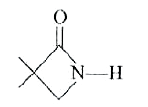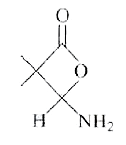A(I)BH3(THF)←−−−−−−−−−−(II)H2O2,OH−CH3C≡CHHgSO4−−−→H2SO4B
Identify A and B.
CH3CH2CH2OH,CH3COCH3
CH3CH3CHO,CH3COCH3
CH3CH2CHO,CH3CH(OH)CH3
CH3CH2COOH,CH3COCH3
To solve the problem, we need to identify the products A and B from the given reactions involving the starting material CH₃C≡CH (propyne) and the reagents H₂SO₄, HgSO₄, BH₃ (THF), and H₂O₂, OH⁻.
1. Identify the starting material:
The starting material is propyne (CH₃C≡CH), which is an alkyne.
2. Determine product B:
- The reaction involves propyne (CH₃C≡CH) with H₂SO₄ and HgSO₄.
- This reaction is known as hydration of alkynes, which follows Markovnikov's rule.
- According to Markovnikov's rule, the hydroxyl group (OH) will attach to the more substituted carbon.
- The reaction will yield an enol (CH₃C(OH)=CH₂), which will tautomerize to form a ketone.
- The final product B will be acetone (CH₃COCH₃).
3. Determine product A:
- The reaction involves propyne (CH₃C≡CH) with BH₃ in THF followed by oxidation with H₂O₂ and OH⁻.
- This process is known as hydroboration-oxidation, which follows the anti-Markovnikov rule.
- In this reaction, the boron adds to the less substituted carbon, resulting in the formation of an organoborane intermediate.
- Upon oxidation, the product formed will be an aldehyde.
- The final product A will be propanal (CH₃CH₂CHO).
Summary of Products:
- Product A: Propanal (CH₃CH₂CHO)
- Product B: Acetone (CH₃COCH₃)
Final Answer:
- A = CH₃CH₂CHO (propanal)
- B = CH₃COCH₃ (acetone)
The starting material is propyne (CH₃C≡CH), which is an alkyne.
- The reaction involves propyne (CH₃C≡CH) with H₂SO₄ and HgSO₄.
- This reaction is known as hydration of alkynes, which follows Markovnikov's rule.
- According to Markovnikov's rule, the hydroxyl group (OH) will attach to the more substituted carbon.
- The reaction will yield an enol (CH₃C(OH)=CH₂), which will tautomerize to form a ketone.
- The final product B will be acetone (CH₃COCH₃).
- The reaction involves propyne (CH₃C≡CH) with BH₃ in THF followed by oxidation with H₂O₂ and OH⁻.
- This process is known as hydroboration-oxidation, which follows the anti-Markovnikov rule.
- In this reaction, the boron adds to the less substituted carbon, resulting in the formation of an organoborane intermediate.
- Upon oxidation, the product formed will be an aldehyde.
- The final product A will be propanal (CH₃CH₂CHO).
- Product A: Propanal (CH₃CH₂CHO)
- Product B: Acetone (CH₃COCH₃)
- A = CH₃CH₂CHO (propanal)
- B = CH₃COCH₃ (acetone)
Topper's Solved these Questions
- HYDROCARBONSBOOK - VMC MODULES ENGLISHCHAPTER - HYDROCARBONSEXERCISE - Level-2
50 Videos
- HYDROCARBONSBOOK - VMC MODULES ENGLISHCHAPTER - HYDROCARBONSEXERCISE - Level-2 (Numerical Value Type)
15 Videos
- HYDROCARBONSBOOK - VMC MODULES ENGLISHCHAPTER - HYDROCARBONSEXERCISE - Level-0 Long Answer Type (5 Marks)
1 Videos
- HALOALKANES AND HALOARENESBOOK - VMC MODULES ENGLISHCHAPTER - HALOALKANES AND HALOARENESEXERCISE - IN-CHAPTER EXERCISE - F
6 Videos
- ICONIC EQUILIBRIUMBOOK - VMC MODULES ENGLISHCHAPTER - ICONIC EQUILIBRIUMEXERCISE - IMPECCABLE
50 Videos
Similar Questions
Knowledge Check
CH3−CH3∣C∣CH3H+H2C=CH2HF−−−→2.5∘C (A) , (A) is :
A B
B C
C DCH3−CH∣CH3−CH2−CH=CH2
DCH3−CH∣CH3−CH2−CH=CH2Consider the following sequence of reactions :
HO−O∣∣C−CH3∣C∣CH3−C≡N200∘C−−−→ALiAIH4−−−−−−→H2OB, (B) isA B
B CHO−H2C−CH3∣C∣CH3−CH2−NH2D
CHO−H2C−CH3∣C∣CH3−CH2−NH2D
Write the main product (s) in each of the following reaction :
(i) CH3−CH3∣C∣CH3−O−CH3+HI→
(ii) CH3−CH=CH2(i)B2H6−−−−−−−−−−−→(ii)3H2O2/OH−
(iii) C6H5−OH(i)aq.NaOH−−−−−−−−→(ii)CO2,H+
View SolutionIn the series, C2H2NaNH2−−−−→2.0eq.XCH3I−−−→2.0eq.YHgSO4−−−−−−−→H2SO4,H2OZ the compound Z is :
View SolutionCH3CH2C≡CCH2CH3+H2OHgSO4−−−→ Product, Product is :
View SolutionCH3CH∣CH3−CH=CH2(i)B2H4−−−−−−−−−→(ii)H2O2/OHXH2SO4−−−→140∘Y
What is Y ?
View SolutionNa2B4O7+ concentrated H2SO4+H2O→(A)(i)C2H5OH−−−−−−−→(ii)ignite(B)
Identify A and B
View SolutionIdentify the compounds A, B and C:
H−C≡C−HH2O−−−−−−−−−−−→dil.H2SO4+HgSO4AH2−−→[Ni]B140∘C−−−−−−−→cons H2SO4C
View Solution
